Remnants Of Our Solar System’s Formation Found In Our Interplanetary Dust
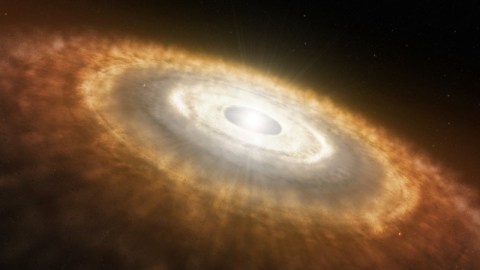
When it comes to the Solar System, all we have left are the survivors. At last, that might be enough to know what happened 4.5 billion years ago.
We know what our Solar System looks like today, but one of science’s greatest mysteries is how it formed and grew up to be the way it is right now. There are some general pieces we know must be true from a variety of astronomical observations. Like all star systems, ours formed from a collapsing cloud of molecular gas. Like all stars with planets, our young proto-star formed a protoplanetary disk that grew into planets, asteroids, and the Kuiper belt. From simulations, we know that many bodies were ejected, accreted, and absorbed over time.
But 4.5 billion years on, we don’t have remnants of what our Solar System was like at the time of its birth. In the great gravitational dance taking place in our cosmic backyard, we cannot know what our full history was. All we have left are the survivors. But for the first time, those survivors likely include something left over from our protoplanetary dawn: interplanetary dust particles. For the first time, we can truly learn where we came from.
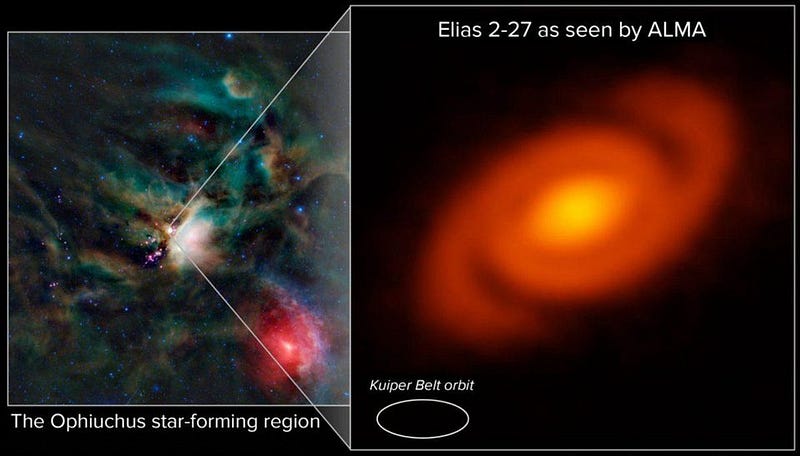
When we look to interstellar or interplanetary dust in other star systems, we know that there are three main components to the solid material that will go into forming planets:
- amorphous silicates,
- carbon compounds, and
- ices.
We would love to find remnants of these materials here on Earth, but we cannot find any whose origins trace back to the young Solar System. 4.5 billion years of geology have transformed, metamorphosed, or otherwise destroyed these would-be terrestrial remnants. Put simply, the Earth was simply too harsh an environment for these primordial materials to survive for so long.
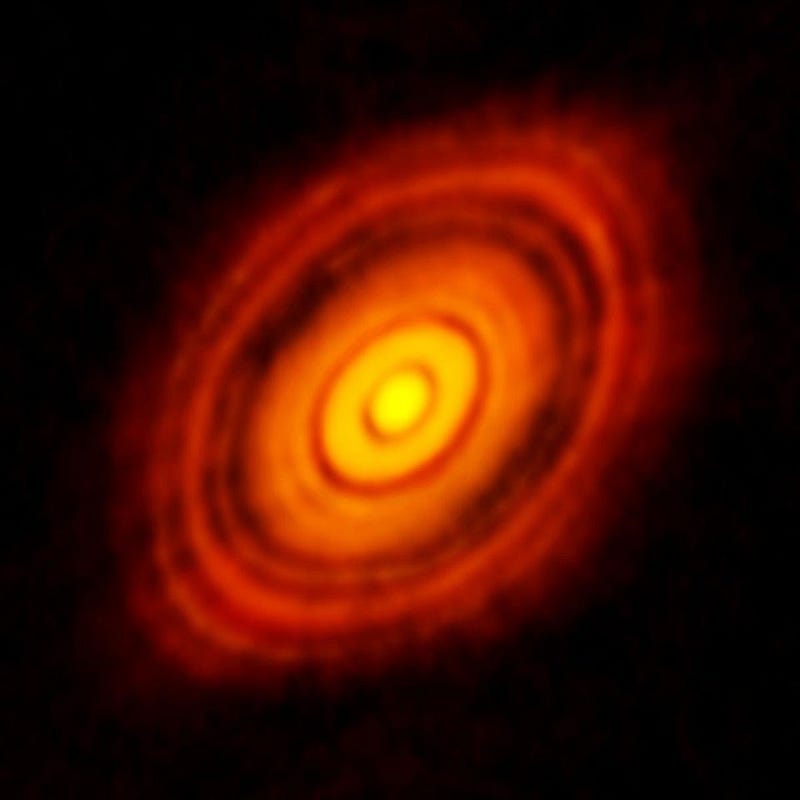
But in the far, outer reaches of the Solar System, that pre-solar dust could have survived. We’ve flown into the trails of comets before, collecting interplanetary dust particles and analyzing their composition. They are known to contain grains of amorphous silicates on tiny, sub-micron scales, many of which appear to be carbon-free.
There’s also some variety in the relative isotopes of the compounds found in different samples of this interplanetary dust. Some of them have anomalous ratios of certain elements to others, demonstrating that they are preserved dust that arose from the interstellar medium. But there’s a debate raging over whether these silicate grains predate the Solar System, or whether they formed in the solar nebula via the condensation of high-temperature gas. In a new study led by Hope A. Ishii, the interplanetary dust particle composition is mapped, for the first time, with nanometer-scale resolution.
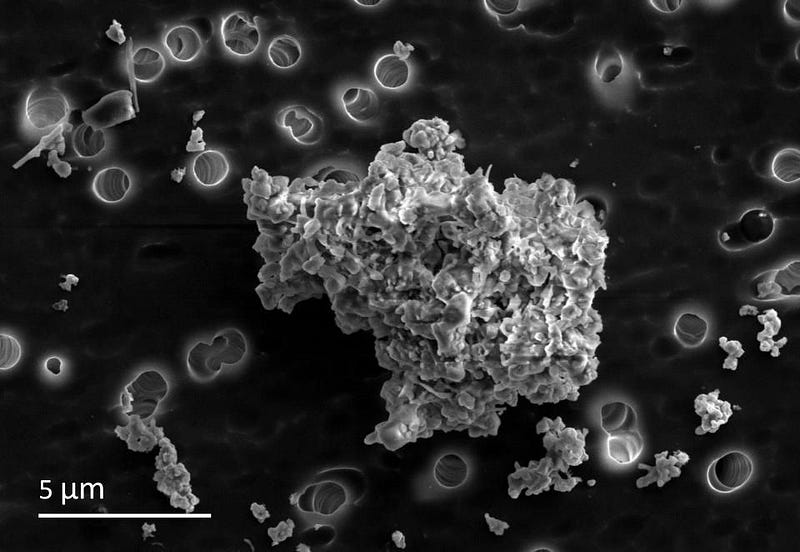
For the first time, in an enormous discovery, her team found that some of these grains of amorphous silicates also contain the same type of carbon found in protoplanetary systems. That is, they contain carbon atoms that are bound up in hydrogen-containing molecules; what many scientists classify as “organic carbon.” The detailed mapping they did showed, for the first time, that there are two generations of grain aggregation present in these interplanetary dust particles:
- an early generation of aggregates with amorphous silicates mantled by organic carbon, and
- a later-generation, lower-density organic carbon matrix that encapsulates the amorphous silicate grains.
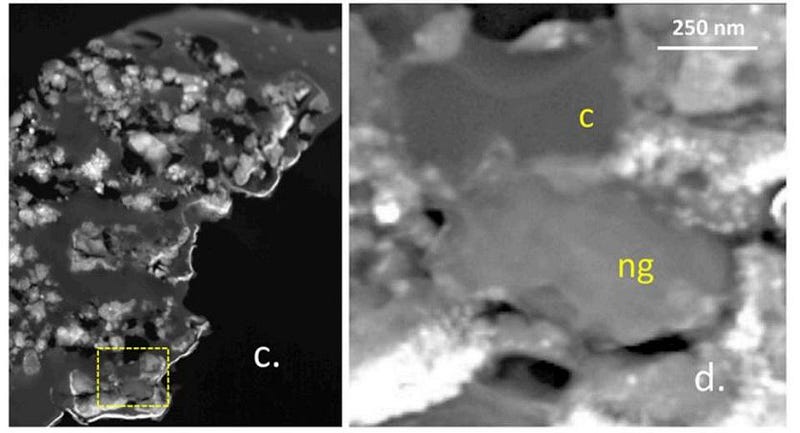
Grain aggregation is the key process in how dust grains grow up into planetesimals, which eventually leads to proto-planets and then to bona fide planets, moons, and the other rocky and icy bodies we have today. But what’s most remarkable about these grains is that it absolutely proves that these silicate grains weren’t formed in the solar nebula from the condensation of high-temperature gas, but rather requires that they predated the Solar System.
The reason is simple: the organic carbon matrix, which encapsulates (and therefore, aggregated around) the amorphous silicate grains, would thermally decompose if it ever achieved a temperature greater than about 450 K. By contrast, all portions of the solar nebula reach temperatures in excess of 1,300 K, indicating that these dust particles must have formed in the pre-solar molecular cloud, or the outer protoplanetary disk.
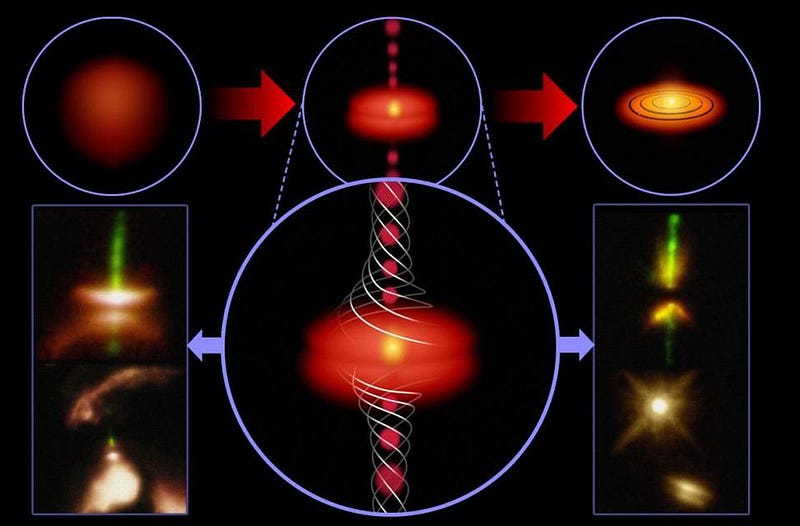
If we want to know where our Solar System came from, and how it got to be the way it is today, we absolutely need to know what it was that we formed from. According to their new paper, Ishii’s team states the following:
Our observations constrain [the silicate] grain formation to cold and radiation-rich environments, making a compelling case that these exotic grains, unique to a relatively obscure class of extraterrestrial material, are surviving dust from (variable) interstellar environments and thus the original building materials of planetary systems.
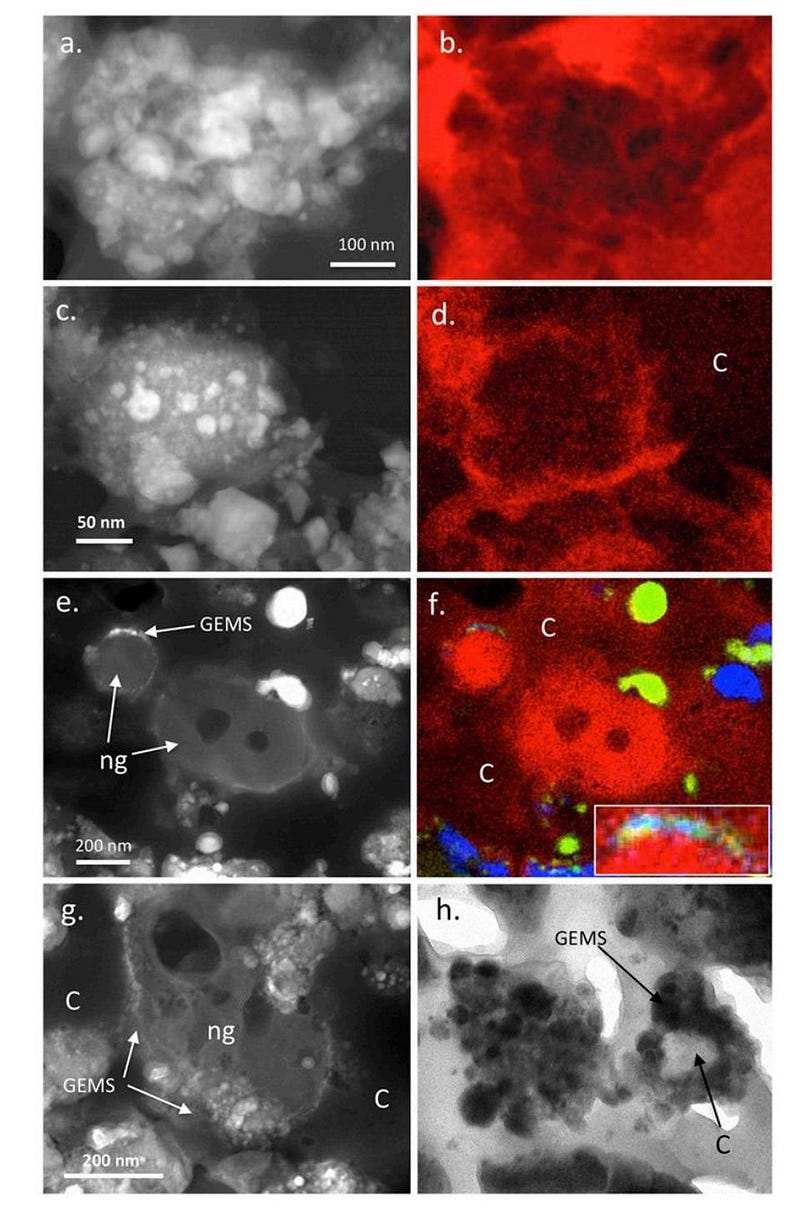
For the first time, we have evidence for two generations of aggregation taking place in the material that would give rise to the formation of planets and other solid bodies in our Solar System. In that evidence, we see suggestions that this material, formed outside of the solar nebula that gave rise to the Sun, contains the early materials that would later fall in to give rise to the worlds we observe and inhabit today.
Our naive picture of a disk that gets very hot, fragments, and cools to then form planets may be hopelessly oversimplified. Instead, we’ve learned that it may actually be cold, outer material that holds the key to our planetary backyard. If the conclusions of the Ishii et al. paper stand the test of time, we may have just revolutionized our understanding of how all planetary systems come into being.
Ethan Siegel is the author of Beyond the Galaxy and Treknology. You can pre-order his third book, currently in development: the Encyclopaedia Cosmologica.




